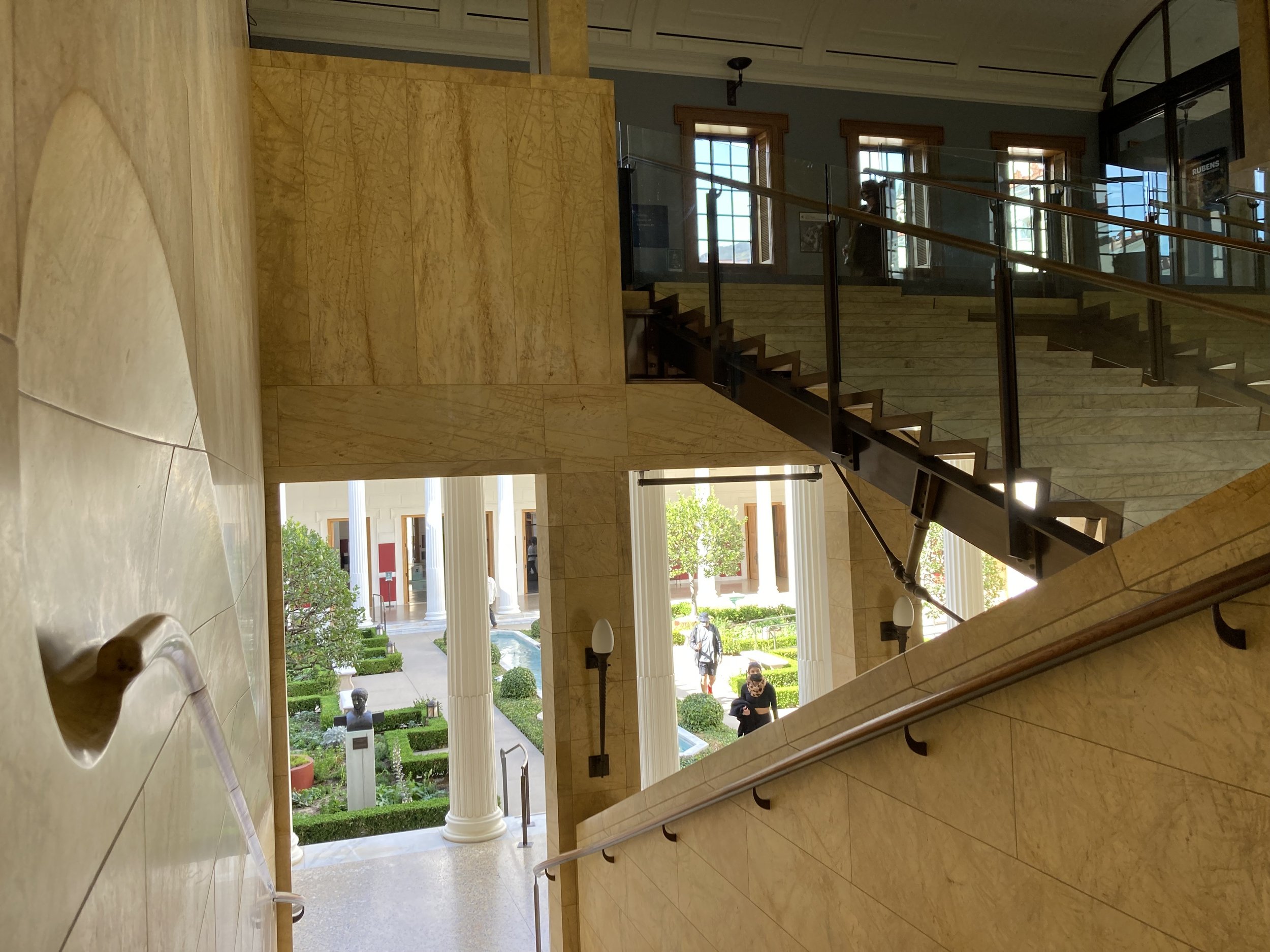Comparing Architectural Detail at the Getty Villa to Roman Architecture and the Vatican
In the past year, I have made trips to LA and Rome, visiting both for the first time and spending a week in each. One of the highlights for me on my trip to LA was the Getty Villa, a recreation of an ancient Villa in Pompeii. Nearly half the world away, in Rome, I was reminded of the villa and struck by the subtle differences due to age, maintenance, and liberties taken at the Getty Villa. The Getty Villa’s architectural details are closely inspired from the originals, although some of the ornament appears slightly embellished at the Villa. The real difference is in the maintenance of the original and how the originals weather at the scale of an ancient major city, relative to the confines of the Getty Campus.
The ancient ruins of Rome (on left), exposed to the elements for hundreds of years in the public squares, cannot be maintained to the same extent as the ornament on columns at the Getty Villa (on right). We did not see any ornament on terracotta roofs like what is seen on the terracotta at the Getty Villa.
The Getty Villa (on right) contains many faithful recreations of Roman statues cast in steel, exposed to the elements but created recently. In Rome the effort taken to maintain what is left of the ancient marble artifacts (on left) is clear almost everywhere you look.
At left is the tile floor in Santa Maria Basilica in Rome. At right is the floor in the Getty Villa. Again, the differences in time, wear, ability to maintain, are evident. Many of the Roman attractions see millions of visitors each year. In that respect, the condition they are in is remarkable. At the Getty Villa, each ruin is specially placed and significant to the layout of the museum. In Rome, ancient ruins are so abundant that in one park you could sit on the remnants of an ancient column to take a rest from walking.
Ancient Roman architecture and villas did not follow the modern code requirements the Getty Villa is confined to. It was especially noticeable on ancient stairs, which were typically far steeper or shallower than the modern American standard the Getty Villa (below) was built to meet. At the Vatican, we braved conditions climbing Saint Peter’s Basilica that would never fly in a modern building. At right are the long shallow steps near the bottom. The strongly sloping treads with irregular risers keeps everyone in perpetual momentum toward the exit. At left was near the top of the dome as the spiral stair bent into the shape of the dome. These stairs were steep and narrow with no handrails in some places.
The stairs of the Getty Villa are right in the middle of the museum. The decision to put such a modern stair in this rather classical setting is an interesting one. I realized in Rome that this stair calls out that difference; standing in such stark contrast, the modernity of the aesthetic and code requirements.






